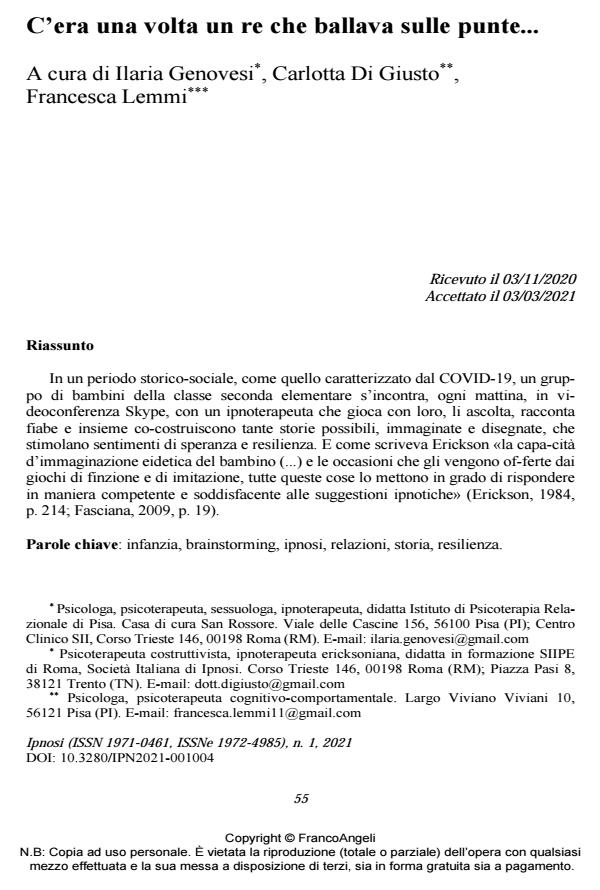Once upon a time there was a king who danced on his toes
Journal title IPNOSI
Author/s Ilaria Genovesi, Carlotta Di Giusto, Francesca Lemmi
Publishing Year 2021 Issue 2021/1
Language Italian Pages 9 P. 55-63 File size 202 KB
DOI 10.3280/IPN2021-001004
DOI is like a bar code for intellectual property: to have more infomation
click here
Below, you can see the article first page
If you want to buy this article in PDF format, you can do it, following the instructions to buy download credits

FrancoAngeli is member of Publishers International Linking Association, Inc (PILA), a not-for-profit association which run the CrossRef service enabling links to and from online scholarly content.
In a historical-social period, such as that characterized by COVID-19, a group of children of the second grade class meets every morning in Skype video confer-ence with a hypnotherapist who plays with them, listens to them, tells fairy tales and they create together many possible, imagined, designed stories, which stimu-late feelings of hope and resilience (Short, Casula, 2004). And as Erickson wrote «the child’s eidetic ability imagination (...) and the opportunities offered to him by games of fiction and imitation, all these things enable him to respond in a compe-tent and satisfactory manner to hypnotic suggestions» (Erickson, 1984, p. 214).
Keywords: childhood, brainstorming, hypnosis, relationships, history, resilience.
Ilaria Genovesi, Carlotta Di Giusto, Francesca Lemmi, C’era una volta un re che ballava sulle punte.. in "IPNOSI" 1/2021, pp 55-63, DOI: 10.3280/IPN2021-001004